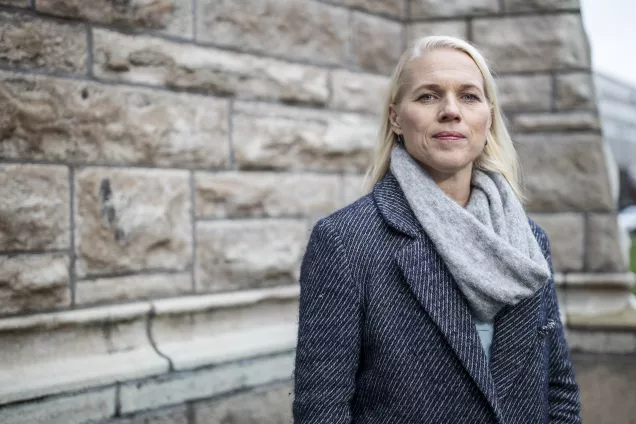Building the Malmö Breast Imaging Database for Evaluation of Artificial Intelligence
Technology development pushes us to find new ways of working, also in breast screening. Breast screening has been organized in the same manner since the 1980's, apart from the switch from analogue to digital mammography (DM) in late 1990's, which was a huge practical leap forward. In Sweden and many northern European countries double-reading is practiced, where two breast radiologists independently read the images, in order to increase both sensitivity and specificity. The first CAD (computer-aided detection) systems were based on hand-crafted rules and had issues with specificity. With the introduction of deep-learning and neural networks, the algorithms used today are trained on large number of examples and by themselves find ways to detect cancer – potentially by identifying patterns that may not be visible to humans. There is a great chance that artificial intelligence (AI) will change breast imaging used either as a stand-alone tool for e.g. risk prediction or in conjunction with the human reader as a decision aid. Furthermore, if digital breast tomosynthesis (DBT) is to be used in screening, reading times will be prolonged (approximately doubled). In addition, there is a lack of breast radiologists.
Background: Only in Sweden, approx. 700K women 40-74 years of age, attend mammography screening every year; making up one of the largest, long-term preventive projects in female population health. Digital breast tomosynthesis, DBT is a form of 3D-mammography that overcomes the overlapping tissue effect inherent in mammography and hence detects more breast cancers. Internationally, the Malmö Breast Tomosynthesis Screening Trial, MBTST, with almost 15000 women examined with both DM and DBT is one of the largest prospective trials and provides essential data forming the evidence-base for tomosynthesis in screening. The results from our trial recently published in The Lancet Oncology showed a 34% increase in cancer detection (2). In parallel, we have through collaboration with Dutch researchers investigated the use of artificial intelligence (AI) and machine learning (ML) in breast screening by using an international retrospective cancer enriched cohort through collaboration with Dutch researchers. The results were recently published in JNCI (3) and another manuscript accepted in Eur Radiol (A Rodriquez-Ruiz, et al).
Since it is important to assess AI in more realistic screening settings, we subsequently have performed investigated different ways of using AI in screening based onanalysesusing a subcohort of the DM cases in our screening trial MBTST. We were able to prove that stand-alone AI could improve the efficiency in breast cancer screening by safely excluding one-fifth of normal mammograms, including a small fraction of false positives, from screen reading performed by radiologists without missing cancers. This may consequently reduce work load and costs in screening (K Lång et al., Eur Radiol 2020 submitted). Another of our studies indicated that AI might make it possible to detect additional cancers on DM – cancers that radiologists only detected on DBT (V Dahlblom et al., Radiol Artificial intelligence, 2021). A further study showed that AI can be used to identify women with the highest gain from DBT detecting almost 60% of DBT-only detected cancers by examining just 10% of the women with DBT (V Dahlblom et al., J Med Imag, 2023).
Further, and even more solid evaluation of AI demands even larger amounts of data, where it can e.g. be possible to study performance in subgroups of women or for specific types of breast cancer.
Aim: The overall aim of this research project is to build a large imaging databases to be used for development and evaluation of AI and machine learning software. The following specific aims will be investigated:
1) Development and validation of machine learning in breast cancer screening
a. To study the accuracy of ML AI compared to human readers in digital mammography
b. To study the accuracy of ML AI compared to human readers in digital breast tomosynthesis
c. Assess if ML AI can improve the screening workflow by discarding clearly normal screening examinations
d. Assess the feasibility of using ML AI to reduce the number of interval cancers
2) Development of radiological breast cancer risk profiles
a. Development of radiological risk profiles based on breast density, texture analysis, and image findings
b. Evaluation of potential changes in breast density and texture analysis over a longer period of time vs. tumour evolvement and growth

Sophia Zackrisson
Sophia.Zackrisson@med.lu.se

Anders Tingberg
Anders.Tingberg@med.lu.se

Anetta Bolejko
Associate professor, Principal investigator
Anetta.Bolejko@med.lu.se

Predrag Bakic
Predrag.Bakic@med.lu.se

Magnus Dustler
Magnus.Dustler@med.lu.se

Victor Dahlblom
Doctoral student
victor.dahlblom@med.lu.se

